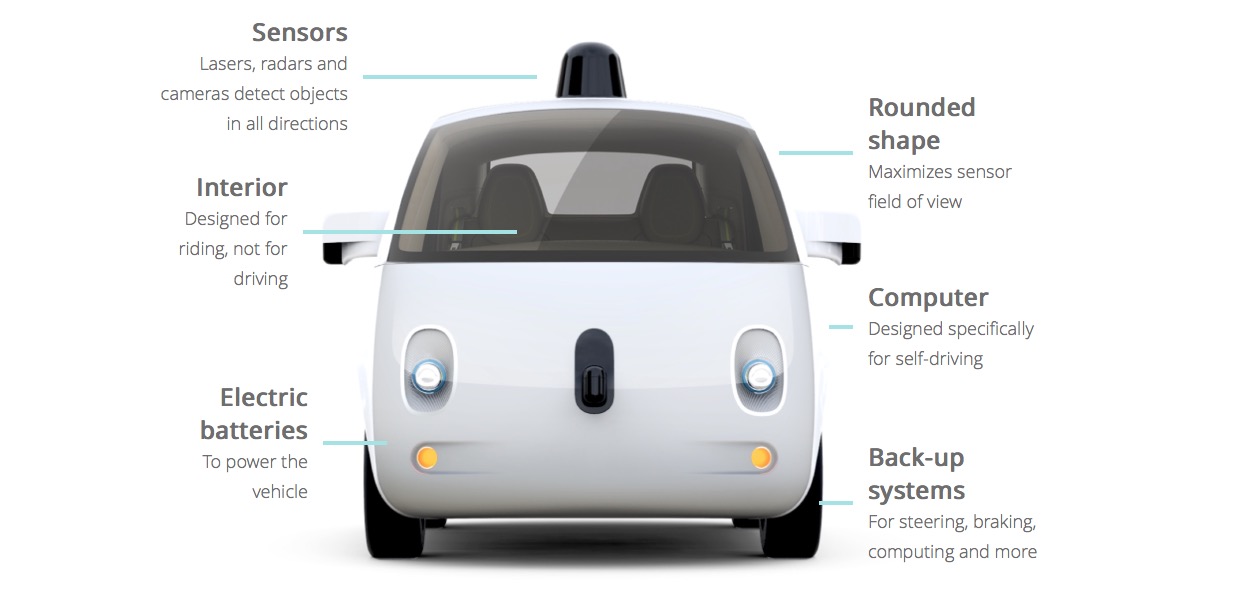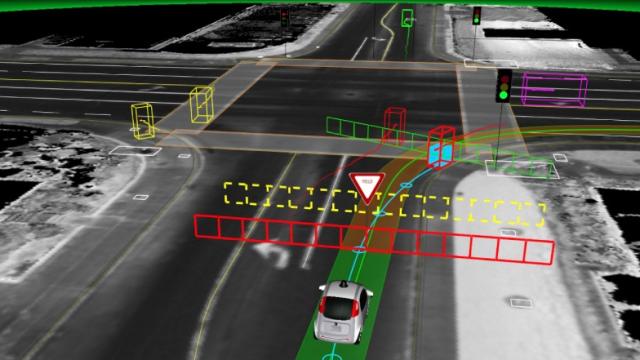Last month, a vehicle rear-ended one of Google’s self-driving cars at a Mountain View intersection. No one was hurt, but Google didn’t exactly broadcast the news to the public. Now, anyone will be able to download monthly reports about where the cars are and what they’re doing, thanks to a new transparency initiative from Google.
The call for Google to make consistent, detailed public reports about its autonomous vehicles has reverberated loudly in the last few weeks, including a persuasive plea by our colleagues at Jalopnik. After some high-profile crashes were reported by the Associated Press, Google’s Chris Urmson wrote an essay on Medium that shared some data and findings — but not all.
In a shareholder call today, Google co-founder Sergey Brin announced a new website where crash reports will be filed on an ongoing basis alongside more information about the program and its team. There are new videos, an FAQ, even a place to file a complaint about a car if you didn’t like something it did. (You know the “How’s My Driving?” phone numbers on the back of delivery trucks? It’s like an updated version of that.)
While this is all a fantastic step forward for transparency, it’s also some very smart PR for the self-driving cars, too. While they’re adorable when parked, they might still seem a bit menacing and mysterious for some people when they’re on the streets. For the first time, Google is really trying to explain what they’re doing with the program in a way that the general public can understand.

So what actually happened to Google’s cars on the streets last month? Here are some of the most interesting details from the May report, which also includes data since the program was founded six years ago. Let us know if you see anything else notable in the report we might have missed!
Miles driven
- Autonomous mode: 1,011,338 miles since 2009 (software is driving the vehicle, and safety drivers are not touching the manual controls)
- Manual mode: 796,250 miles since 2009 (safety drivers are driving the cars)
- Currently averaging ~10,000 autonomous miles per week on public streets
Vehicles on the road
- 23 Lexus RX450h SUVs: Currently self-driving on public streets, mainly Mountain View, CA
- 9 prototypes: Currently self-driving on closed test tracks
Crashes
- 12 minor accidents since 2009, not including one that happened just this week. “Not once was the self-driving car the cause of the accident,” claims Google.
- Most of the crashes are from other cars rear-ending Google’s car.
- The only reported crash that appears to have been Google’s fault: “A Google Prius model AV operating in manual mode was involved in an accident on Charleston Road in Mountain View, CA. An employee operating the Google AV to run an errand (i.e., he was not using the vehicle to test our autonomous technology) rear-ended a vehicle that was stopped in traffic. No injuries were reported at the scene. The Google AV sustained some damage.”
- The latest crash: “A Google Lexus model AV was travelling southbound on Shoreline Boulevard in Mountain View in autonomous mode and was stopped behind traffic at a red light at the intersection of Shoreline Boulevard and El Camino Real. A vehicle approaching from behind collided with the rear bumper and sensor of the Google AV. The approximate speed of the other vehicle at the time of impact was 1 MPH. There were no injuries reported at the scene by either party. The Google AV sustained minor damage to its rear sensor and bumper. There was no visible damage to the other vehicle.”
An almost-crash that was a learning experience
- In a section titled “Interesting Situation of the Month,” Google claims its self-driving car was able to see two cyclists at night better than a human driver: “The cyclist on the left had entered the left turn lane, but veered back into our path to continue straight across the intersection. At the same time, the cyclist on the right entered the intersection, travelling against the flow of traffic. That cyclist then took a sudden left turn, coming directly at us in our lane. Our car was able to predict that cyclist’s path of travel, so we stopped and yielded. This happened at night, when it would have been very difficult for a human driver to see what was unfolding.”
You can read the whole report here, and be sure to check out Google’s site.
